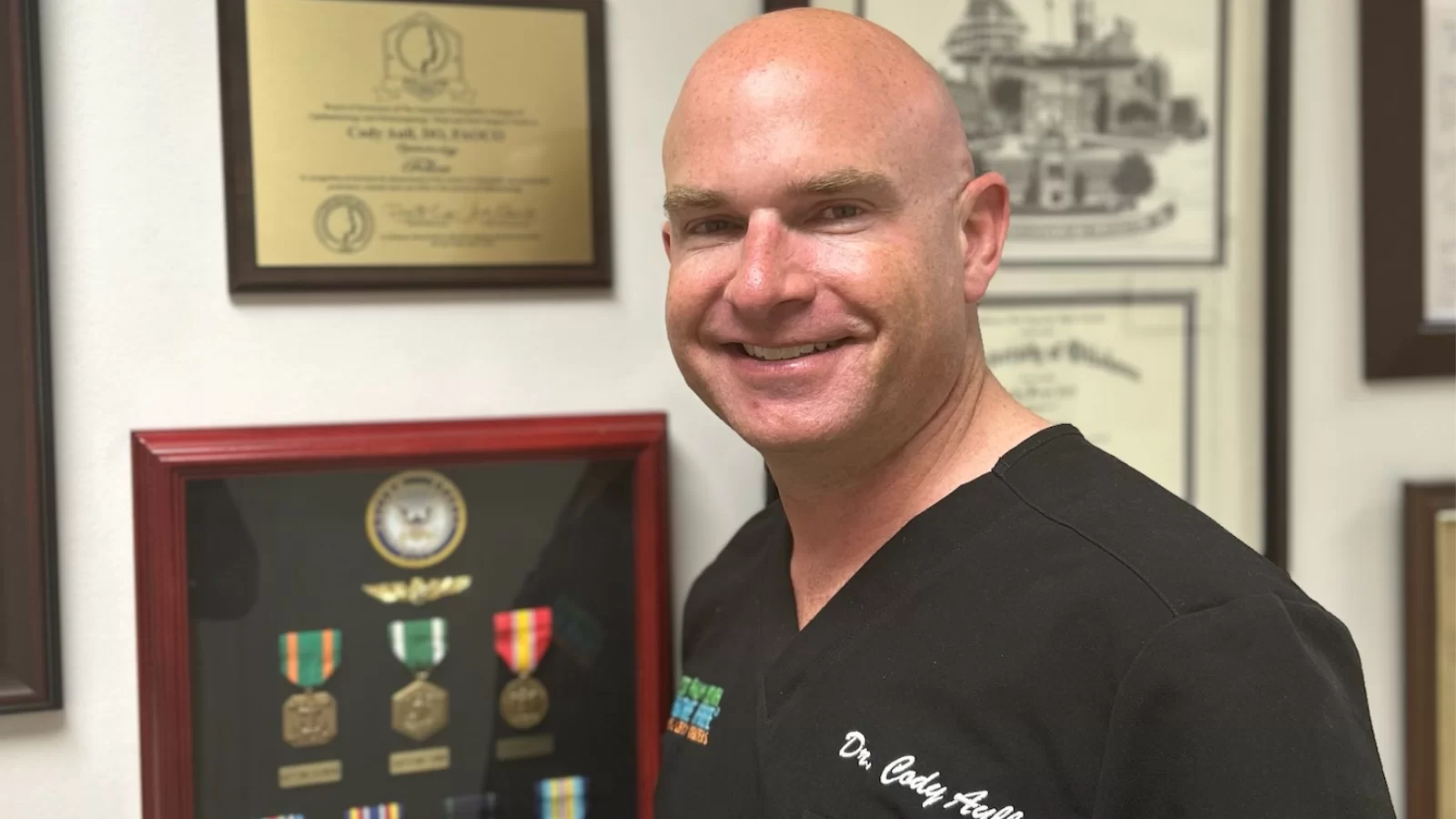Dr. Cody Aull | West Palm Beach Breathe Free
Dr. Cody Aull | West Palm Beach Breathe Free
- Physical symptoms of chronic sinusitis can include nasal inflammation, runny nose, postnasal drainage, congestion, pain or swelling in the face, headaches, loss of smell and taste, sore throat, bad breath, or fatigue.
- Short-term sinusitis could be caused by something such as a common cold, but chronic sinusitis may be caused by an infection or some other ailment.
- Balloon sinuplasty is a procedure often recommended for people with chronic sinusitis.
"What we're dealing with when we talk about sinuses are super-small holes that need to stay open," Dr. Aull told the Sunshine Sentinel. "If you have a little bit of inflammation in a really small hole, it shrinks and closes off really fast. Now, you've started the cascade of a sinus problem or infection and some of the different symptoms that you're going to have. Just a little bit of inflammation in a very tight space like the nose causes a big problem."
Nasal inflammation, also referred to as sinusitis, involves the inflammation or swelling of the sinus lining, according to the American Sinus Institute. This condition can obstruct air passages, leading to increased mucus production and the potential for infection. It's a relatively common issue, often triggered by something as simple as the common cold. Additionally, allergic rhinitis, which involves swelling of the nasal lining, can contribute to nasal inflammation. Another possible cause is a deviated septum or a structural shift within the nasal cavity, which can also initiate this condition.
Nearly 37 million Americans suffer from at least one episode of acute nasal inflammation each year, according to the American Sinus Institute. Those who suffer from conditions such as blockage of drainage ducts, nasal polyps, narrow drainage ducts, nasal mucous membrane swelling, or those whose medications compromise the immune system could be at greater risk for this condition. Children who are exposed to second-hand smoke may also be more likely to have an attack.
According to WebMD, your sinuses are air-filled spaces inside your forehead, cheekbones, and behind the bridge of your nose. When the sinuses become inflamed—usually due to an allergic reaction or an infection—they swell, produce more mucus, and the channels that drain them can become blocked. The buildup of pressure in your sinuses can cause pain that feels similar to a headache.
Balloon sinuplasty, also known as balloon catheter dilation surgery, is a procedure to clear blocked sinuses. According to Healthline, this procedure is relatively new, having been approved by the Food and Drug Administration in 2005. Balloon sinuplasty is most often recommended for people with chronic sinusitis after other treatments for their condition have proven ineffective. Balloon sinuplasty is fairly straightforward, and reported complications are minimal.
Dr. Aull earned his Doctor of Osteopathic Medicine degree from the University of Health Sciences/Kirksville College of Osteopathic Medicine in Missouri, according to West Palm Beach Breathe Free's website. Following that, he finished his residency in otolaryngology and surgery, which included an ENT internship, at Northeast Regional Medical Center in Missouri. He has also served as a flight surgeon in the U.S. Navy.



 Alerts Sign-up
Alerts Sign-up